How to Fix an ACER Monitor Showing ‘No Signal’ Issue?
Your Acer monitor will show no signal due to issues with the system’s graphics settings or as a result of the BIOS problem.
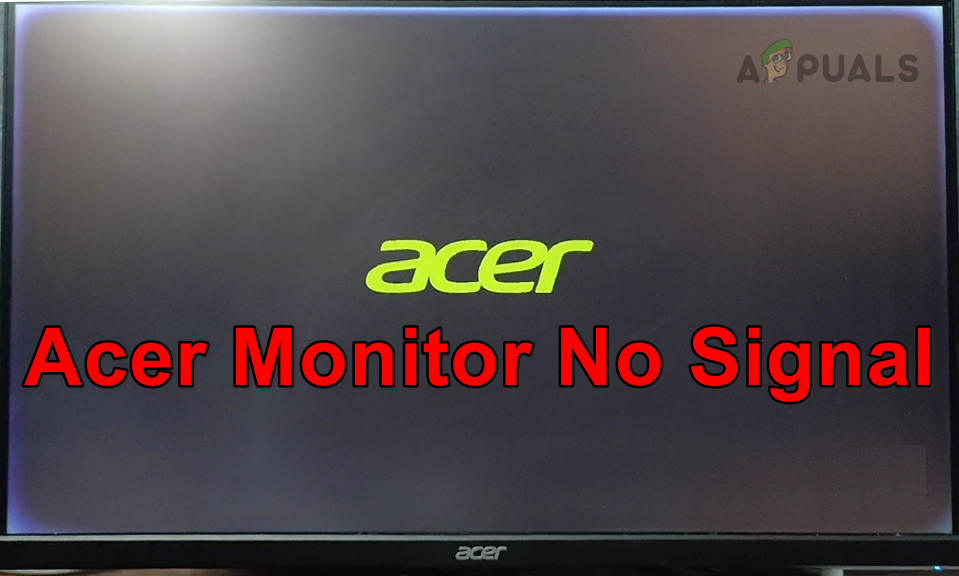
This problem can happen in both, a multi-monitor setup or a single-monitor setup. The issue is reported on desktops, laptops, servers, etc. and is not specific to a single operating system. We’ve seen this occur on new as well as previously working monitors.
Before starting the troubleshooting process:
- Check if the monitor works with another device such as a Chromebook.
- Connect the Acer monitor to the PC by using another cable and port.
- Use a different port type to connect the system to the monitor. For example, if the issue is occurring with HDMI, use the DP port and cable.
- Make sure the proper input is selected on the monitor.
- If the issue is occurring on the DP port, check the DP version on the monitor and make sure the system supports that.
- If your system has two graphic cards (one discrete and the other dedicated), check if using the other card makes the monitor work. You may need to switch the port as well as change the system settings to make this work.
For a multi-monitor setup, the methods discussed below are easy to follow. If the issue is occurring with a single monitor, you will either need another monitor or use a different port such as a VGA port to connect the monitor to the system.
1. Restart the Monitor and System
Your Acer monitor will fail to show any output from the system if the monitor’s or system’s modules are in an error state and cannot process displaying. In such a case, restarting the monitor and your system will solve the problem.
First, we will try to simply reseat the cable. If this doesn’t work, we can move forward with force refreshing all modules.
- Unplug the monitor’s cable from the system and wait for a minute.
- Plug back the cable and check if the display issue is resolved.
If this didn’t work, let’s try force refreshing your entire system.
- Power off all monitors and your system.
- Unplug the power cables and unplug the monitor’s cable from the system.
If the issue is occurring with a laptop, remove its battery as well and press/hold the power button for 20 seconds.
Unplug the Power Cable of the Acer Monitor - Wait for a minute and plug back everything except the monitor.
- Power on the problematic monitor and once properly powered on, power on the system & connect the monitor.
- See if the monitor is showing the display.
- If this does not work, power off your system and reseat all the internal components of your system, especially, RAMs.
2. Update the System’s OS to the Latest Build
If your system’s outdated OS is not compatible with the firmware of your Acer monitor, the handshake between the devices will fail and thus the system will not be able to output to the monitor. To solve this, update your system’s OS to the latest build.
- Right-click Windows and go to Settings > Windows Update.
- In the right pane, click on Check for Updates and if updates are available, install those updates.
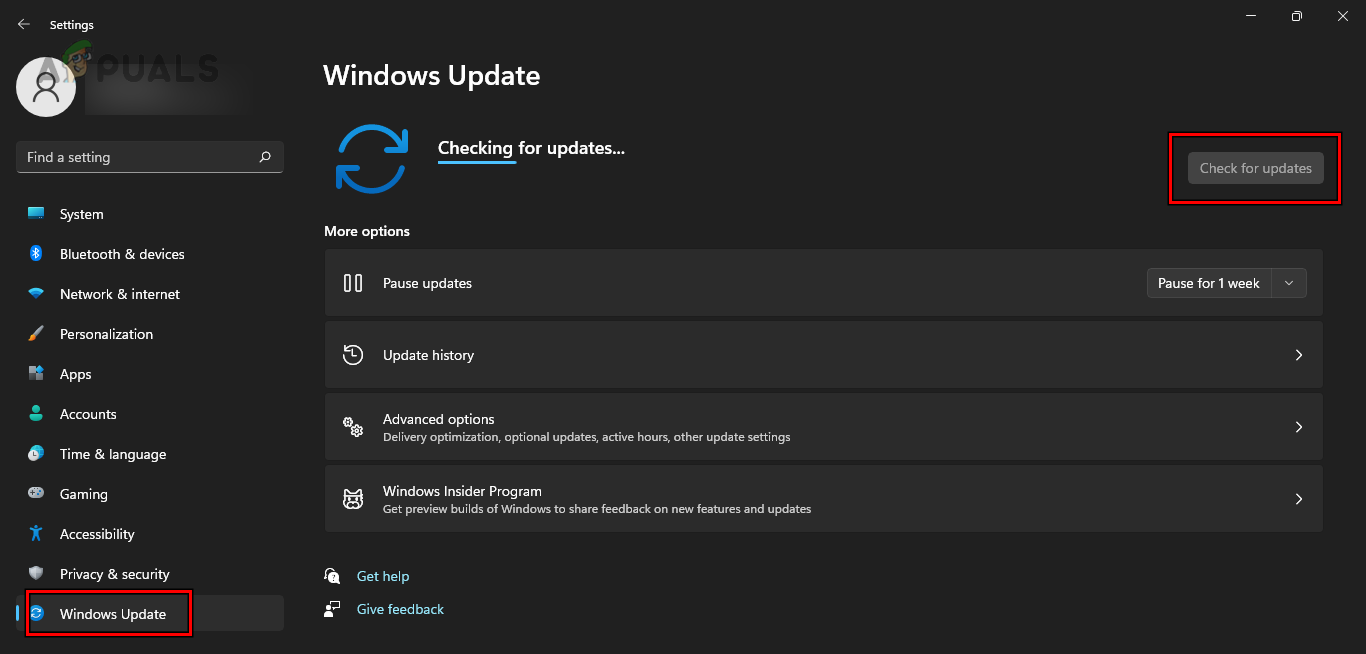
Check for Windows Updates - Restart the system and check if the Acer monitor is showing the display.
If the issue persists, update the firmware of your Acer monitor and check if that clears the problem.
3. Change the System’s Resolution and Refresh Rate
If your system’s resolution and refresh rate does not match the monitor’s resolution or refresh rate, the monitor will not be able to show the output and will show the no signal screen. This can be solved by changing the system’s resolution and refresh rate.
For Windows
- Right-click Windows and go to Settings > System > Display.

Lower the Display Resolution and Open Advanced Display - Lower the Display Resolution and open Advanced Display.
- Select a lower Refresh Rate and check if the Acer monitor is working correctly.

Lower the Refresh Rate of Your Display
In some cases, you may use the OEM control panel (such as Intel HD Control Panel) to change the display’s resolution and refresh rate.
For macOS
- Navigate to Mac’s System Preferences > Displays.
- Select a low Resolution and expand the Refresh Rate dropdown.
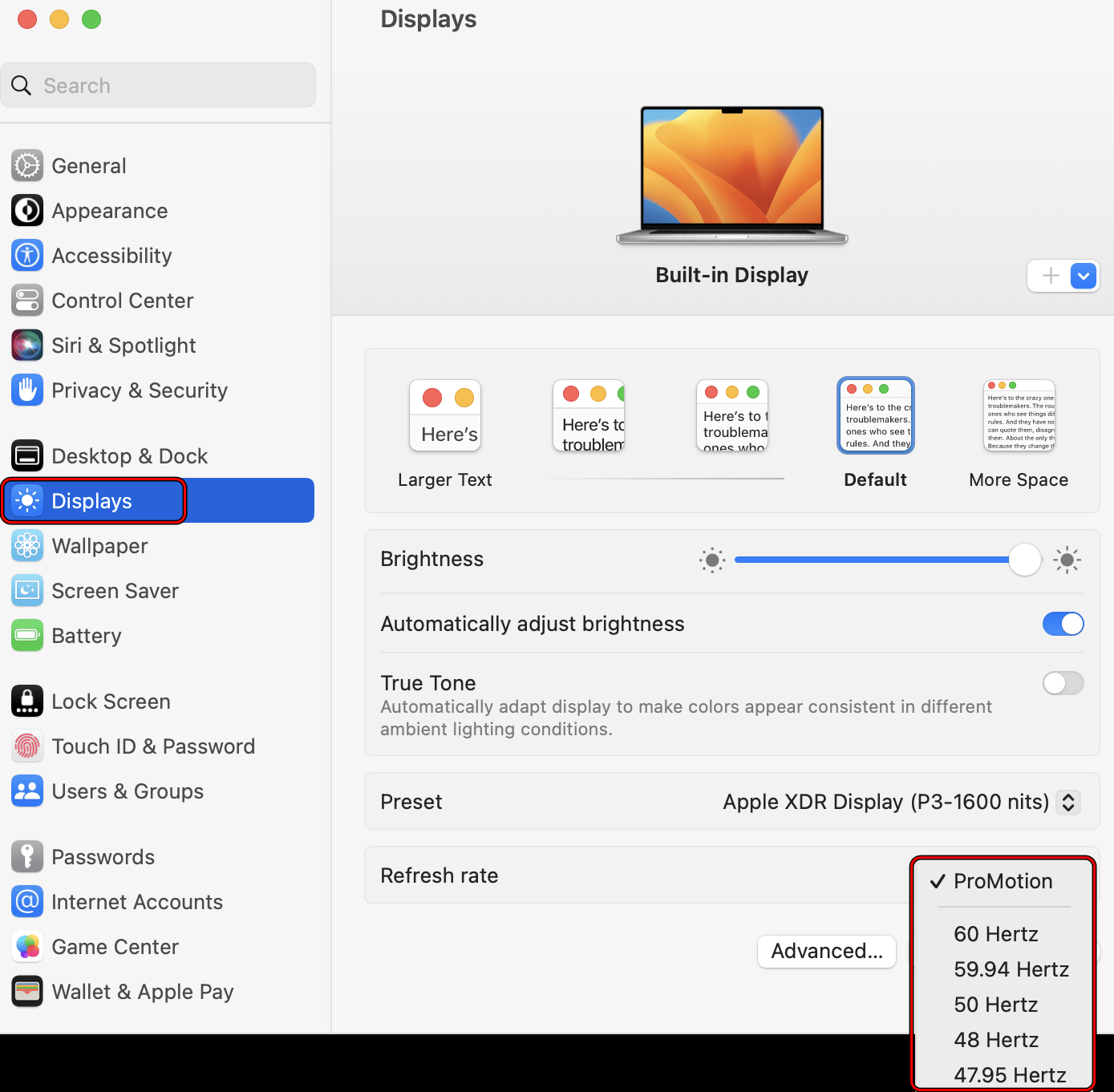
Lower the Refresh Rate on a Mac - Select a lower Refresh Rate (such as 60 Hz or 50 Hz) and check if the no signal issue is resolved.
4. Disable HDCP in the Graphics Control Panel
HDCP is used to protect HD multimedia (videos and audio) from being recorded. If your current configurations are triggering this feature on your system for the Acer monitor, no output signal will be sent to the monitor, and thus you will receive the ‘no signal’ notification on the monitor.
To fix this, disable HDCP in your graphics control panel. To do so on an AMD:
- Launch the AMD graphics control panel and go to Display > Specs.
- Open Override (confirmation) and select HDCP Support.

Disable HDCP Support in the AMD Settings - Disable it and restart the system. Verify if the Acer monitor is operating properly.
5. Update the System’s Drivers to the Latest Build
The monitor will show ‘no signal’ if your system’s display driver is outdated and as a result, the PC is failing to output its display in a format compatible with the monitor. Here, updating the system’s drivers to the latest build will solve the problem.
Through the Device Manager
- Right-click Windows and go to Device Manager > expand Display Adapters.
- Right-click on your graphics device and select Update Driver.
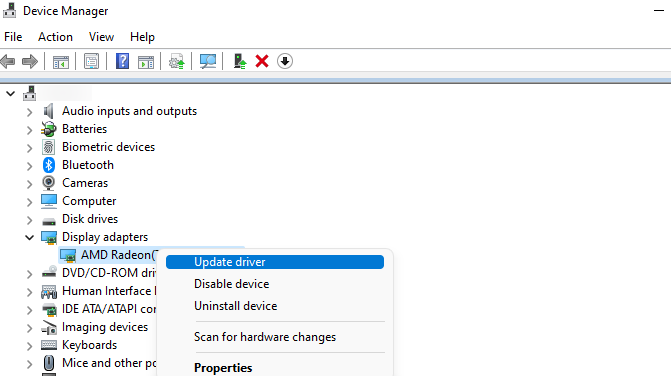
Update the Display Driver Through the Device Manager - Click on Search Automatically for Drivers and let the driver update install.
- Restart the system and check if the monitor’s no signal issue is cleared.
Manually Update the Driver
- Download the latest driver of your system from the OEM website and install it as an administrator.
- Restart the system and check if the Acer monitor is working properly.
Update Through the OEM App
- Launch the OEM app (such as HP Support Assistant) and check if any update of drivers is shown.
- If so, install all the available updates and restart the system. See if the monitor’s no-signal problem is solved.
6. Reset SMC and PRAM/NVRAM (Mac Only)
SMC (System Management Controller) holds essential configurations for battery, power, fans, and other similar features. PRAM (Parameter Random-Access Memory) or NVRAM (Non-Volatile Random–Access Memory) holds configurations for volume, display resolution, and startup disk location.
If the configurations in any of these two are invalid, your Mac will fail to output any display on the Acer monitor and thus cause the issue. Here, resetting SMC and PRAM/NVRAM will solve the problem.
Reset SMC
To reset SMC on a MacBook:
- Power off the MacBook and on the built-in keyboard, press/hold the following keys (on the left side):
Shift Control Options Power

Perform an SMC Reset on the MacBook Air - Wait for 10 seconds and then release the keys.
- Press the power button and once the MacBook is properly powered on, see if the Acer monitor is showing the display.
Source: https://apple.stackexchange.com/questions/98092/macbook-external-display-no-signal (Rafał Sroka)
Reset PRAM/NVRAM
- Restart the Mac and press/hold the following keys:
Option Command P R

Perform a PRAM Reset on the MacBook Air - Wait for the second startup chime and then release the keys.
- Once the Mac has properly powered on, verify if the monitor issue is resolved.
7. Edit the BIOS Settings or Reset it
If your system’s graphics configurations are not valid in the system’s BIOS, you will fail to see any output on the Acer monitor. Editing the BIOS settings of your system or resetting it will solve the problem.
Change Boot Mode
- If this does not work, boot your system into BIOS and go to Boot Type or Boot Mode.
- Enable CSM and save the changes.

Enable CSM in the System’s BIOS - Boot your system into the OS and check if the monitor is displaying properly.
Reset BIOS
- Boot your system in the BIOS and open BIOS Recovery Options.
- Select Reset BIOS Settings to Default and click on Continue.
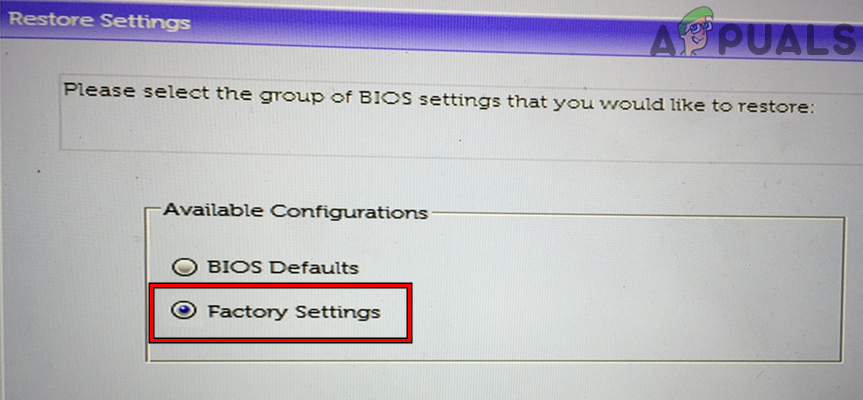
Reset BIOS to Factory Settings - Once done, boot the system into the OS and see if the monitor is working correctly.
- If not, change the CMOS battery of the system and determine if the problem is solved.
- If the issue persists, reinstall the system’s BIOS (if supported) and check if the issue is resolved.
8. Use the System Restore
Uour monitor will show no signal if a recent change to the system is not compatible with the monitor. This can be in the form of a new application or service. If you do not know what caused the problem, a safe bet is to restore the system.
- Right-click Windows and go to Settings > System > Recovery.
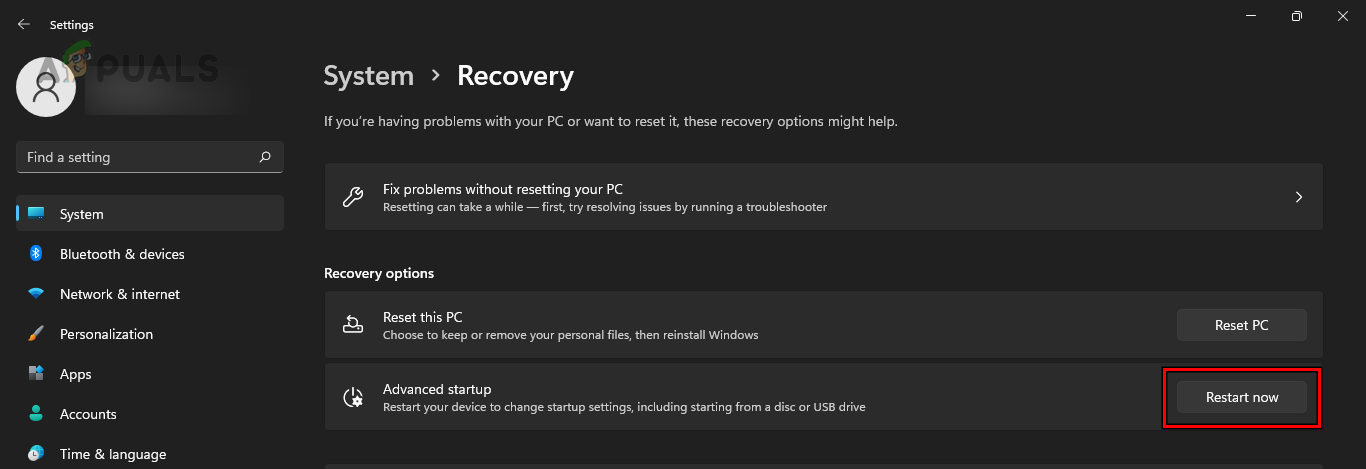
Click on Restart Now in the Advanced Recovery Startup - In the Advanced Startup section, click on Restart Now, and in the Windows Recovery Environment, go to Troubleshoot > Advanced Options.
- Click on System Restore and select the most recent restore point.
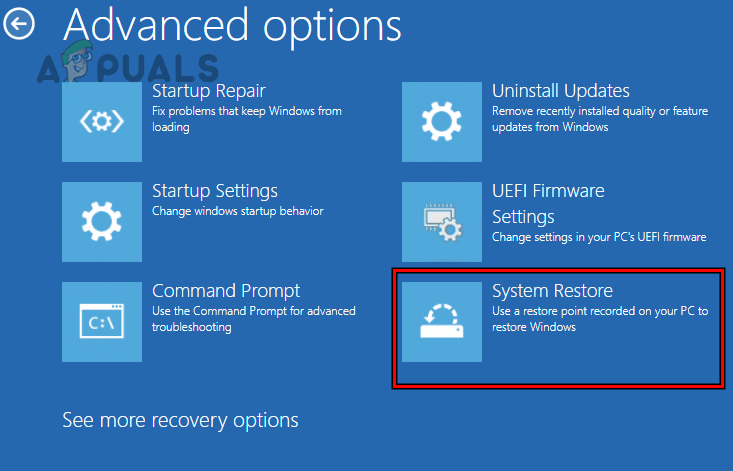
Use System Restore in the Advanced Recovery Options - Follow the prompts on your screen to complete the process and once done, hopefully, the Acer monitor will be working correctly.
If none of the above works, contact Acer Support, especially, if the monitor does not work with any other device.
 Reviewed by
Reviewed by 




